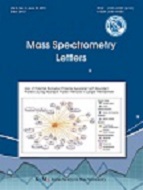
- P-ISSN 2233-4203
- E-ISSN 2093-8950

Characterization and studies of proteome are challenging because biological samples are complex, with a wide dynamic range of abundance. At present the proteins are identified by digestion into peptides, with subsequent identification of the peptides by mass spectrometry (MS). MS is a powerful technique for the purpose, but it cannot identify every peptide in such complex mixtures simultaneously. For accurate analysis and quantification it is important to separate the peptides first by chromatographyinto fractions of a size that MS can handle. With these less complex fractions, the probability is increased of identifying peptides of low abundance that would otherwise experience ion suppression effects due to the presence of peptides of high abundance. Enrichment for peptides with certain post-translational modifications helps to increase their detection rates as well. Electrostatic repulsion-hydrophilic interaction chromatography (ERLIC) is a mixed-mode chromatographic technique which combines the use of electrostatic repulsion and hydrophilic interaction. This review provides an overview of ERLIC and its variousproteomics applications. ERLIC has been demonstrated to have good orthogonality to reverse phase liquid chromatography (RPLC), making it useful as a first dimension in multidimensional liquid chromatography (MDLC) and fractionation of digestsin general. Peptides elute in order of their isoelectric points and polarity. ERLIC has also been successfully utilized for the enrichment for phosphopeptides and glycopeptides, facilitating their identification. In addition, it is promising for the study ofpeptide deamidation. ERLIC performs comparably well or better than established methods for these various applications, and serves as a viable and efficient workflow alternative.
Yarmush, M. L.. (2002). . Annual Review Of Biomedical Engineering, 4, 349-.
Banks, R. E.. (2000). . Lancet, 356, 1749-.
Hunter, T.. (2000). . Cell, 100, 113-.
Ohtsubo, K.. (2006). . Cell, 126, 855-.
Cohen, P.. (2000). . Trends in Biochemical Sciences, 25, 596-.
Apweiler, R.. (1999). . Biochimica et Biophysica Acta (BBA) - General Subjects, 1473, 4-.
Blume-Jensen, P.. (2001). . Nature, 411, 355-.
Li, M.. (2010). . J. Biosci, 35, 665-.
Zubarev, R. A.. (2013). . Proteomics, 13, 723-.
Catherman, A. D.. (2014). . Biochemical and Biophysical Research Communications, 445, 683-.
O'Farrell, P. H.. (1975). . J. Biol. Chem, 250, 4007-.
Magdeldin, S.. (2014). . Clin. Proteomics, 11, -.
Zhang, Y.. (2013). . Chemical Reviews, 113, 2343-.
Motoyama, A.. (2008). . Anal. Chem, 80, 7187-.
Giddings, J. C.. (1984). . Anal. Chem, 56, 1258A-.
Alpert, A. J.. (1990). . Journal of Chromatography, 499, 177-.
Alpert, A. J.. (2008). . Anal. Chem, 80, 62-.
Hao, P.. (2010). . J. Proteome Res, 9, 3520-.
Hao, P. L.. (2011). . J. Proteome Res, 10, 5568-.
Boichenko, A. P.. (2013). . Sep. Sci, 36, 3463-.
Hao, P. L.. (2011). . Mol. Cell. Proteomics, 10, 1-.
Hao, P. L.. (2012). . J. Proteome Res, 11, 1804-.
Alpert, A. J.. (2010). . Anal. Chem, 82, 5253-.
Chen, X.. (2011). . Chromatogr. B, 879, 25-.
de Jong, E. P.. (2012). . J. Proteome Res, 11, 5059-.
Adav, S. S.. (2012). . Mol. Cell. Proteomics, 11, -.
Manavalan, A.. (2012). . J. Proteomics, 75, 2468-.
Mishra, M.. (2012). . J. Proteomics, 75, 1600-.
Zhang, Q.. (2013). . Proteomes, 1, 128-.
Gan, C. S.. (2008). . J. Proteome Res, 7, 4869-.
Chien, K. -y.. (2011). . J. Proteome Res, 10, 4041-.
Bennetzen, M. V.. (2010). . Mol. Cell. Proteomics, 9, 1314-.
Guo, T.. (2011). . Cell. Mol. Life Sci, 68, 1983-.
Lewandrowski, U.. (2008). . Clin. Proteomics, 4, 25-.
Darula, Z.. (2012). . Mol. Cell. Proteomics, 11, -.
Wang, Z.. (2010). . Sci. Signal, 3, 1-.
Zhang, H.. (2010). . Mol. Cell. Proteomics, 9, 635-.
Hao, P.. (2011). . PLoS ONE, 6, 1-.
Trang HuyenTran. (2012). An Application of Electrostatic Repulsion Hydrophilic Interaction Chromatography in Phospho- and Glycoproteome Profiling of Epicardial Adipose Tissue in Obesity Mouse. Mass Spectrometry Letters, 3(2), 39-42.
Geiger, T.. (1987). . J. Biol. Chem, 262, 785-.
Hao, P.. (2014). . Current Protocols, , -.